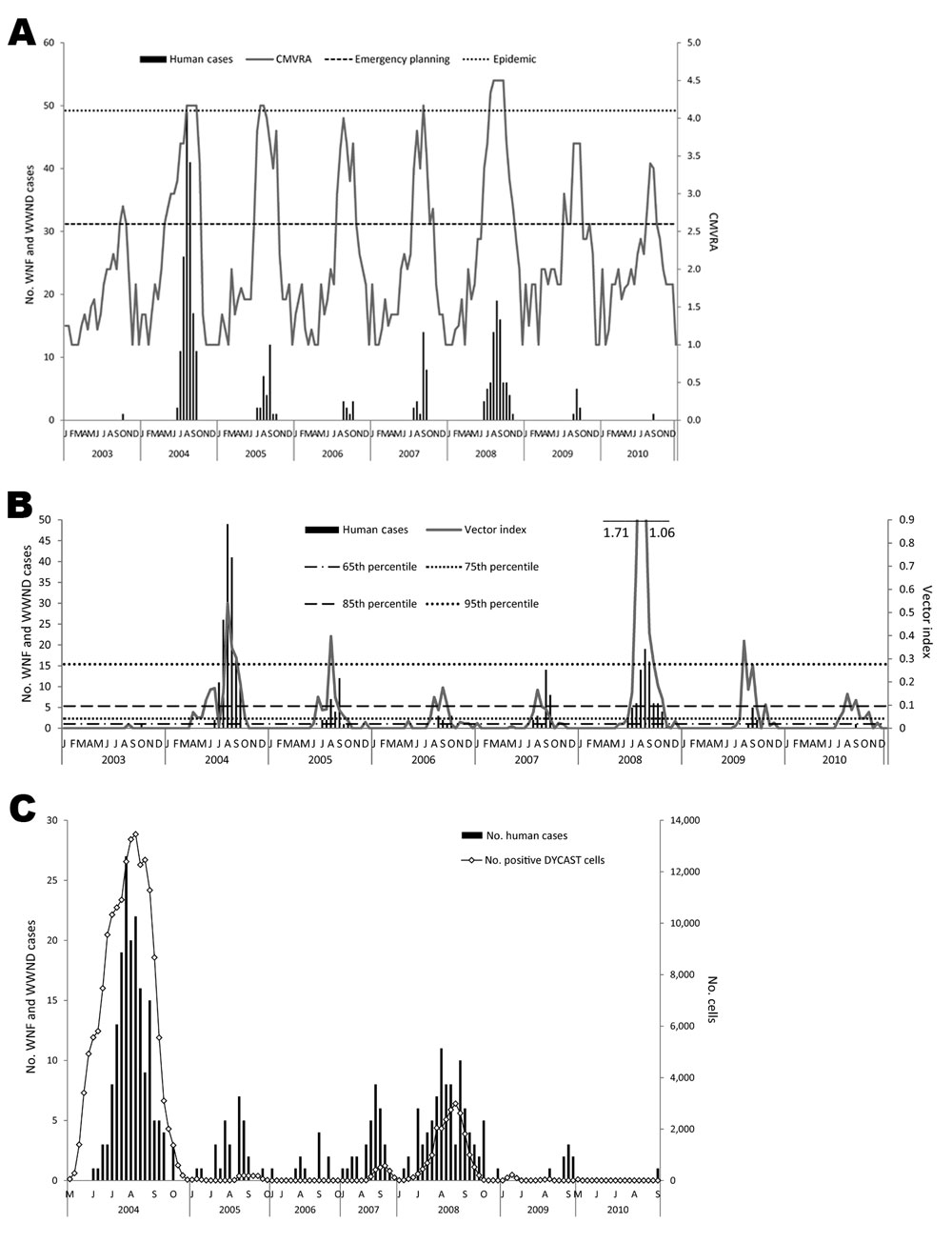Volume 18, Number 8—August 2012
Research
Comparison of Enzootic Risk Measures for Predicting West Nile Disease, Los Angeles, California, USA, 2004–2010
Figure 1

Figure 1. . . Comparison of risk estimates to human case occurrence for WNF and WWND, Los Angeles, California, USA. A) CMVRA estimates by using Culex pipiens quinquefasciatus mosquitoes collected by gravid traps. Dashed lines refer to the risk assessment thresholds of emergency planning at 2.6 and epidemic at 4.1. B) Vector index calculated with Cx. p. quinquefasciatus collected by gravid traps. Lines show risk levels discussed in text. C) Weekly counts of positive DYCAST grid cells compared with human case counts. WNF, West Nile fever; WWND, West Nile neuroinvasive disease; CMVRA, California Mosquito-Borne Virus Risk Assessment; DYCAST, Dynamic Continuous-Area Space-Time system.
Page created: July 18, 2012
Page updated: July 18, 2012
Page reviewed: July 18, 2012
The conclusions, findings, and opinions expressed by authors contributing to this journal do not necessarily reflect the official position of the U.S. Department of Health and Human Services, the Public Health Service, the Centers for Disease Control and Prevention, or the authors' affiliated institutions. Use of trade names is for identification only and does not imply endorsement by any of the groups named above.